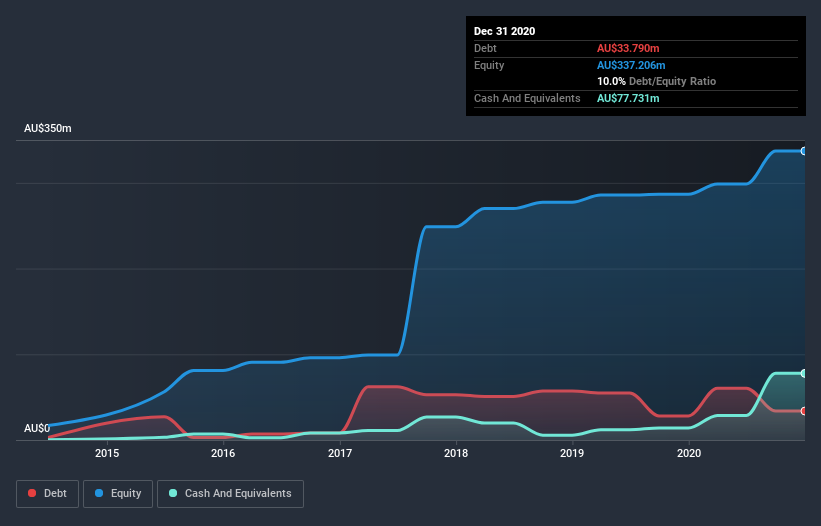These 4 Measures Indicate That BWX (ASX:BWX) Is Using Debt Reasonably Well
David Iben put it well when he said, 'Volatility is not a risk we care about. What we care about is avoiding the permanent loss of capital.' When we think about how risky a company is, we always like to look at its use of debt, since debt overload can lead to ruin. We can see that BWX Limited (ASX:BWX) does use debt in its business. But the real question is whether this debt is making the company risky.
What Risk Does Debt Bring?
Debt is a tool to help businesses grow, but if a business is incapable of paying off its lenders, then it exists at their mercy. In the worst case scenario, a company can go bankrupt if it cannot pay its creditors. However, a more usual (but still expensive) situation is where a company must dilute shareholders at a cheap share price simply to get debt under control. Of course, the upside of debt is that it often represents cheap capital, especially when it replaces dilution in a company with the ability to reinvest at high rates of return. When we examine debt levels, we first consider both cash and debt levels, together.
See our latest analysis for BWX
What Is BWX's Net Debt?
The image below, which you can click on for greater detail, shows that at December 2020 BWX had debt of AU$33.8m, up from AU$28.1m in one year. However, it does have AU$77.7m in cash offsetting this, leading to net cash of AU$43.9m.
How Healthy Is BWX's Balance Sheet?
Zooming in on the latest balance sheet data, we can see that BWX had liabilities of AU$70.2m due within 12 months and liabilities of AU$63.0m due beyond that. Offsetting these obligations, it had cash of AU$77.7m as well as receivables valued at AU$29.0m due within 12 months. So it has liabilities totalling AU$26.5m more than its cash and near-term receivables, combined.
Given BWX has a market capitalization of AU$610.9m, it's hard to believe these liabilities pose much threat. Having said that, it's clear that we should continue to monitor its balance sheet, lest it change for the worse. Despite its noteworthy liabilities, BWX boasts net cash, so it's fair to say it does not have a heavy debt load!
And we also note warmly that BWX grew its EBIT by 14% last year, making its debt load easier to handle. When analysing debt levels, the balance sheet is the obvious place to start. But ultimately the future profitability of the business will decide if BWX can strengthen its balance sheet over time. So if you want to see what the professionals think, you might find this free report on analyst profit forecasts to be interesting.
But our final consideration is also important, because a company cannot pay debt with paper profits; it needs cold hard cash. BWX may have net cash on the balance sheet, but it is still interesting to look at how well the business converts its earnings before interest and tax (EBIT) to free cash flow, because that will influence both its need for, and its capacity to manage debt. In the last three years, BWX's free cash flow amounted to 35% of its EBIT, less than we'd expect. That's not great, when it comes to paying down debt.
Summing up
We could understand if investors are concerned about BWX's liabilities, but we can be reassured by the fact it has has net cash of AU$43.9m. On top of that, it increased its EBIT by 14% in the last twelve months. So we are not troubled with BWX's debt use. The balance sheet is clearly the area to focus on when you are analysing debt. But ultimately, every company can contain risks that exist outside of the balance sheet. To that end, you should be aware of the 2 warning signs we've spotted with BWX .
If you're interested in investing in businesses that can grow profits without the burden of debt, then check out this free list of growing businesses that have net cash on the balance sheet.
This article by Simply Wall St is general in nature. It does not constitute a recommendation to buy or sell any stock, and does not take account of your objectives, or your financial situation. We aim to bring you long-term focused analysis driven by fundamental data. Note that our analysis may not factor in the latest price-sensitive company announcements or qualitative material. Simply Wall St has no position in any stocks mentioned.
Have feedback on this article? Concerned about the content? Get in touch with us directly. Alternatively, email editorial-team (at) simplywallst.com.

